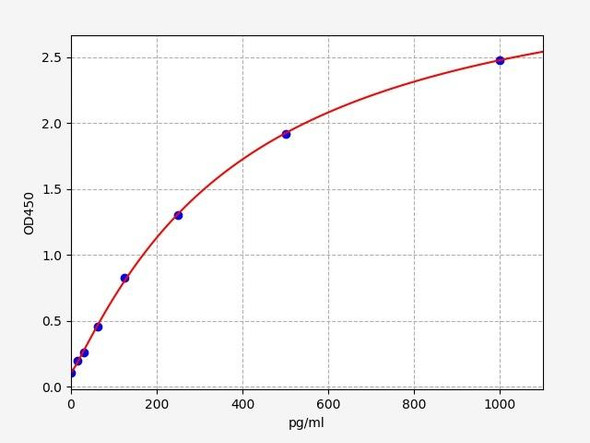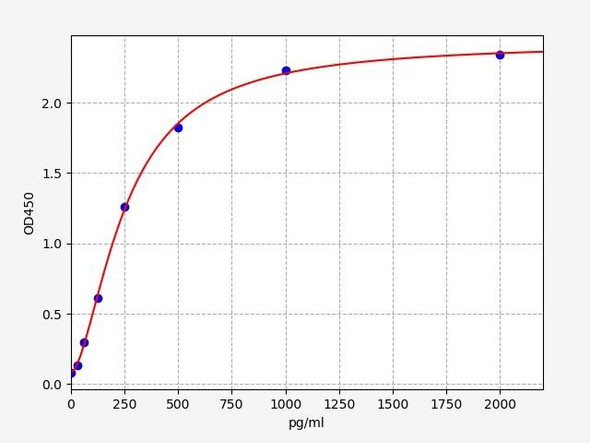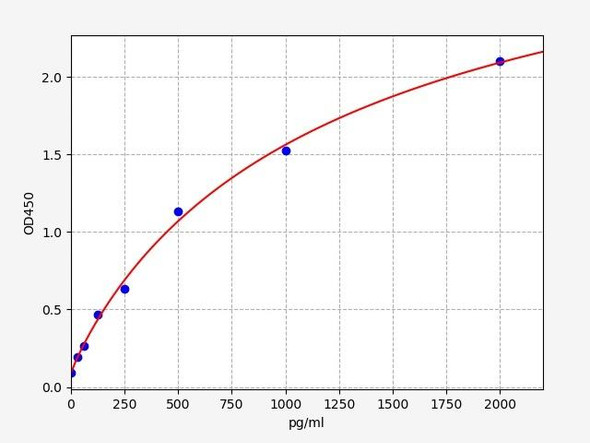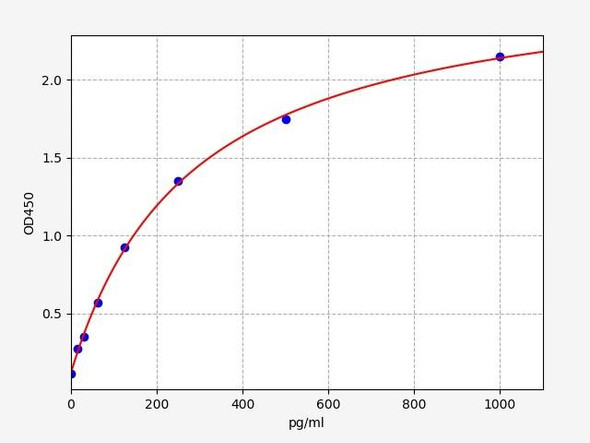Description
Human IL-6st ELISA Kit
The Human IL6ST (Interleukin 6 Signal Transducer) ELISA Kit offered by AssayGenie is a reliable tool for the quantitative measurement of IL6ST levels in human samples including serum, plasma, and cell culture supernatants. With high sensitivity and specificity, this kit provides accurate and reproducible results, making it a valuable asset for various research applications.IL6ST, also known as gp130, is a critical component of the interleukin-6 signaling pathway, playing a key role in immune response regulation and inflammation. Dysregulation of IL6ST has been linked to various diseases including cancer, inflammatory disorders, and autoimmune conditions.
Therefore, measuring IL6ST levels can provide valuable insights into these disease processes and potential therapeutic targets.By utilizing the Human IL6ST ELISA Kit from AssayGenie, researchers can gain a better understanding of IL6ST biology and its implications in health and disease. This kit is easy to use and delivers precise results, making it an essential tool for advancing research in immunology, oncology, and other related fields.
| Product Name: | Human IL-6st ELISA Kit |
| SKU: | HUEB0118 |
| Size: | 96T |
| Target: | Human IL-6st |
| Synonyms: | CDw130, Interleukin-6 signal transducer, Membrane glycoprotein 130, Oncostatin-M receptor subunit alpha, gp130, CD130, IL-6 receptor subunit beta |
| Assay Type: | Sandwich |
| Detection Method: | ELISA |
| Reactivity: | Human |
| Detection Range: | 0.156-10ng/mL |
| Sensitivity: | 0.098ng/mL |
| Intra CV: | 6.9% | ||||||||||||||||||||
| Inter CV: | 11.5% | ||||||||||||||||||||
| Linearity: |
| ||||||||||||||||||||
| Recovery: |
| ||||||||||||||||||||
| Function: | Signal-transducing molecule. The receptor systems for IL6, LIF, OSM, CNTF, IL11, CTF1 and BSF3 can utilize IL6ST for initiating signal transmission. Binding of IL6 to IL6R induces IL6ST homodimerization and formation of a high-affinity receptor complex, which activates Janus kinases (PubMed:2261637). That causes phosphorylation of IL6ST tyrosine residues which in turn activates STAT3 (PubMed:19915009, PubMed:23294003). Mediates signals which regulate immune response, hematopoiesis, pain control and bone metabolism (By similarity). Has a role in embryonic development (By similarity). Does not bind IL6 (PubMed:2261637). Essential for survival of motor and sensory neurons and for differentiation of astrocytes (By similarity). Required for expression of TRPA1 in nociceptive neurons (By similarity). Required for the maintenance of PTH1R expression in the osteoblast lineage and for the stimulation of PTH-induced osteoblast differentiation (By similarity). Required for normal trabecular bone mass and cortical bone composition. |
| Uniprot: | P40189 |
| Sample Type: | Serum, plasma, tissue homogenates, cell culture supernates and other biological fluids |
| Specificity: | Natural and recombinant human Interleukin-6 receptor subunit beta |
| Sub Unit: | Component of a hexamer of two molecules each of IL6, IL6R and IL6ST (PubMed:12829785). Forms heterodimers composed of LIFR and IL6ST (type I OSM receptor) which are activated by LIF and OSM (PubMed:8999038). Also forms heterodimers composed of OSMR and IL6ST (type II receptor) which are activated by OSM but not by LIF (PubMed:8999038). Homodimer. The homodimer binds two molecules of herpes virus 8/HHV-8 protein vIL-6 (PubMed:11238858, PubMed:11251120). Interacts with HCK (PubMed:9406996). Interacts with INPP5D/SHIP1. |
| Research Area: | Cancer |
| Subcellular Location: | Isoform 2 Secreted |
| Storage: | Please see kit components below for exact storage details |
| Note: | For research use only |
| UniProt Protein Function: | gp130: gp130 is a ubiquitously expressed type I cytokine family receptor. The receptor systems for IL6, LIF, OSM, CNTF, IL11 AND CT1 utilize gp130 for initiating signal transmission. Binds to IL6/IL6R (alpha chain) complex, resulting in the formation of high-affinity IL6 binding sites, and transduces the signal. Does not directly bind IL6. May have a role in embryonic development. Contains 5 fibronectin type III domains and 1 immunoglobulin-like C2-type domain. Two alternatively spliced isoforms have been described. |
| UniProt Protein Details: | Protein type:Receptor, cytokine; Membrane protein, integral Chromosomal Location of Human Ortholog: 5q11.2 Cellular Component: extracellular region; interleukin-6 receptor complex; membrane; oncostatin-M receptor complex; plasma membrane Molecular Function:ciliary neurotrophic factor receptor activity; ciliary neurotrophic factor receptor binding; growth factor binding; interleukin-27 receptor activity; interleukin-6 binding; interleukin-6 receptor activity; interleukin-6 receptor binding; leukemia inhibitory factor receptor activity; oncostatin-M receptor activity; protein binding; protein homodimerization activity Biological Process: cytokine and chemokine mediated signaling pathway; leukemia inhibitory factor signaling pathway; negative regulation of apoptosis; positive regulation of acute inflammatory response; positive regulation of adaptive immune response; positive regulation of cell proliferation; positive regulation of osteoblast differentiation; positive regulation of T cell proliferation; positive regulation of tyrosine phosphorylation of Stat1 protein; positive regulation of tyrosine phosphorylation of Stat3 protein; response to cytokine stimulus |
| NCBI Summary: | The protein encoded by this gene is a signal transducer shared by many cytokines, including interleukin 6 (IL6), ciliary neurotrophic factor (CNTF), leukemia inhibitory factor (LIF), and oncostatin M (OSM). This protein functions as a part of the cytokine receptor complex. The activation of this protein is dependent upon the binding of cytokines to their receptors. vIL6, a protein related to IL6 and encoded by the Kaposi sarcoma-associated herpesvirus, can bypass the interleukin 6 receptor (IL6R) and directly activate this protein. Knockout studies in mice suggest that this gene plays a critical role in regulating myocyte apoptosis. Alternatively spliced transcript variants have been described. A related pseudogene has been identified on chromosome 17. [provided by RefSeq, May 2014] |
| UniProt Code: | P40189 |
| NCBI GenInfo Identifier: | 215273999 |
| NCBI Gene ID: | 3572 |
| NCBI Accession: | P40189.2 |
| UniProt Secondary Accession: | P40189,Q5FC04, Q9UQ41, A0N0L4, |
| UniProt Related Accession: | P40189 |
| Molecular Weight: | 96,276 Da |
| NCBI Full Name: | Interleukin-6 receptor subunit beta |
| NCBI Synonym Full Names: | interleukin 6 signal transducer |
| NCBI Official Symbol: | IL6ST |
| NCBI Official Synonym Symbols: | CD130; GP130; CDW130; IL-6RB |
| NCBI Protein Information: | interleukin-6 receptor subunit beta |
| UniProt Protein Name: | Interleukin-6 receptor subunit beta |
| UniProt Synonym Protein Names: | CDw130; Interleukin-6 signal transducer; Membrane glycoprotein 130; gp130; Oncostatin-M receptor subunit alpha; CD_antigen: CD130 |
| Protein Family: | Interleukin-6 receptor |
| UniProt Gene Name: | IL6ST |
| UniProt Entry Name: | IL6RB_HUMAN |
| Component | Quantity (96 Assays) | Storage |
| ELISA Microplate (Dismountable) | 8×12 strips | -20°C |
| Lyophilized Standard | 2 | -20°C |
| Sample Diluent | 20ml | -20°C |
| Assay Diluent A | 10mL | -20°C |
| Assay Diluent B | 10mL | -20°C |
| Detection Reagent A | 120µL | -20°C |
| Detection Reagent B | 120µL | -20°C |
| Wash Buffer | 30mL | 4°C |
| Substrate | 10mL | 4°C |
| Stop Solution | 10mL | 4°C |
| Plate Sealer | 5 | - |
Other materials and equipment required:
- Microplate reader with 450 nm wavelength filter
- Multichannel Pipette, Pipette, microcentrifuge tubes and disposable pipette tips
- Incubator
- Deionized or distilled water
- Absorbent paper
- Buffer resevoir
*Note: The below protocol is a sample protocol. Protocols are specific to each batch/lot. For the correct instructions please follow the protocol included in your kit.
Allow all reagents to reach room temperature (Please do not dissolve the reagents at 37°C directly). All the reagents should be mixed thoroughly by gently swirling before pipetting. Avoid foaming. Keep appropriate numbers of strips for 1 experiment and remove extra strips from microtiter plate. Removed strips should be resealed and stored at -20°C until the kits expiry date. Prepare all reagents, working standards and samples as directed in the previous sections. Please predict the concentration before assaying. If values for these are not within the range of the standard curve, users must determine the optimal sample dilutions for their experiments. We recommend running all samples in duplicate.
| Step | |
| 1. | Add Sample: Add 100µL of Standard, Blank, or Sample per well. The blank well is added with Sample diluent. Solutions are added to the bottom of micro ELISA plate well, avoid inside wall touching and foaming as possible. Mix it gently. Cover the plate with sealer we provided. Incubate for 120 minutes at 37°C. |
| 2. | Remove the liquid from each well, don't wash. Add 100µL of Detection Reagent A working solution to each well. Cover with the Plate sealer. Gently tap the plate to ensure thorough mixing. Incubate for 1 hour at 37°C. Note: if Detection Reagent A appears cloudy warm to room temperature until solution is uniform. |
| 3. | Aspirate each well and wash, repeating the process three times. Wash by filling each well with Wash Buffer (approximately 400µL) (a squirt bottle, multi-channel pipette,manifold dispenser or automated washer are needed). Complete removal of liquid at each step is essential. After the last wash, completely remove remaining Wash Buffer by aspirating or decanting. Invert the plate and pat it against thick clean absorbent paper. |
| 4. | Add 100µL of Detection Reagent B working solution to each well. Cover with the Plate sealer. Incubate for 60 minutes at 37°C. |
| 5. | Repeat the wash process for five times as conducted in step 3. |
| 6. | Add 90µL of Substrate Solution to each well. Cover with a new Plate sealer and incubate for 10-20 minutes at 37°C. Protect the plate from light. The reaction time can be shortened or extended according to the actual color change, but this should not exceed more than 30 minutes. When apparent gradient appears in standard wells, user should terminatethe reaction. |
| 7. | Add 50µL of Stop Solution to each well. If color change does not appear uniform, gently tap the plate to ensure thorough mixing. |
| 8. | Determine the optical density (OD value) of each well at once, using a micro-plate reader set to 450 nm. User should open the micro-plate reader in advance, preheat the instrument, and set the testing parameters. |
| 9. | After experiment, store all reagents according to the specified storage temperature respectively until their expiry. |
When carrying out an ELISA assay it is important to prepare your samples in order to achieve the best possible results. Below we have a list of procedures for the preparation of samples for different sample types.
| Sample Type | Protocol |
| Serum | If using serum separator tubes, allow samples to clot for 30 minutes at room temperature. Centrifuge for 10 minutes at 1,000x g. Collect the serum fraction and assay promptly or aliquot and store the samples at -80°C. Avoid multiple freeze-thaw cycles. If serum separator tubes are not being used, allow samples to clot overnight at 2-8°C. Centrifuge for 10 minutes at 1,000x g. Remove serum and assay promptly or aliquot and store the samples at -80°C. Avoid multiple freeze-thaw cycles. |
| Plasma | Collect plasma using EDTA or heparin as an anticoagulant. Centrifuge samples at 4°C for 15 mins at 1000 × g within 30 mins of collection. Collect the plasma fraction and assay promptly or aliquot and store the samples at -80°C. Avoid multiple freeze-thaw cycles. Note: Over haemolysed samples are not suitable for use with this kit. |
| Urine & Cerebrospinal Fluid | Collect the urine (mid-stream) in a sterile container, centrifuge for 20 mins at 2000-3000 rpm. Remove supernatant and assay immediately. If any precipitation is detected, repeat the centrifugation step. A similar protocol can be used for cerebrospinal fluid. |
| Cell culture supernatant | Collect the cell culture media by pipette, followed by centrifugation at 4°C for 20 mins at 1500 rpm. Collect the clear supernatant and assay immediately. |
| Cell lysates | Solubilize cells in lysis buffer and allow to sit on ice for 30 minutes. Centrifuge tubes at 14,000 x g for 5 minutes to remove insoluble material. Aliquot the supernatant into a new tube and discard the remaining whole cell extract. Quantify total protein concentration using a total protein assay. Assay immediately or aliquot and store at ≤ -20 °C. |
| Tissue homogenates | The preparation of tissue homogenates will vary depending upon tissue type. Rinse tissue with 1X PBS to remove excess blood & homogenize in 20ml of 1X PBS (including protease inhibitors) and store overnight at ≤ -20°C. Two freeze-thaw cycles are required to break the cell membranes. To further disrupt the cell membranes you can sonicate the samples. Centrifuge homogenates for 5 mins at 5000xg. Remove the supernatant and assay immediately or aliquot and store at -20°C or -80°C. |
| Tissue lysates | Rinse tissue with PBS, cut into 1-2 mm pieces, and homogenize with a tissue homogenizer in PBS. Add an equal volume of RIPA buffer containing protease inhibitors and lyse tissues at room temperature for 30 minutes with gentle agitation. Centrifuge to remove debris. Quantify total protein concentration using a total protein assay. Assay immediately or aliquot and store at ≤ -20 °C. |
| Breast Milk | Collect milk samples and centrifuge at 10,000 x g for 60 min at 4°C. Aliquot the supernatant and assay. For long term use, store samples at -80°C. Minimize freeze/thaw cycles. |









